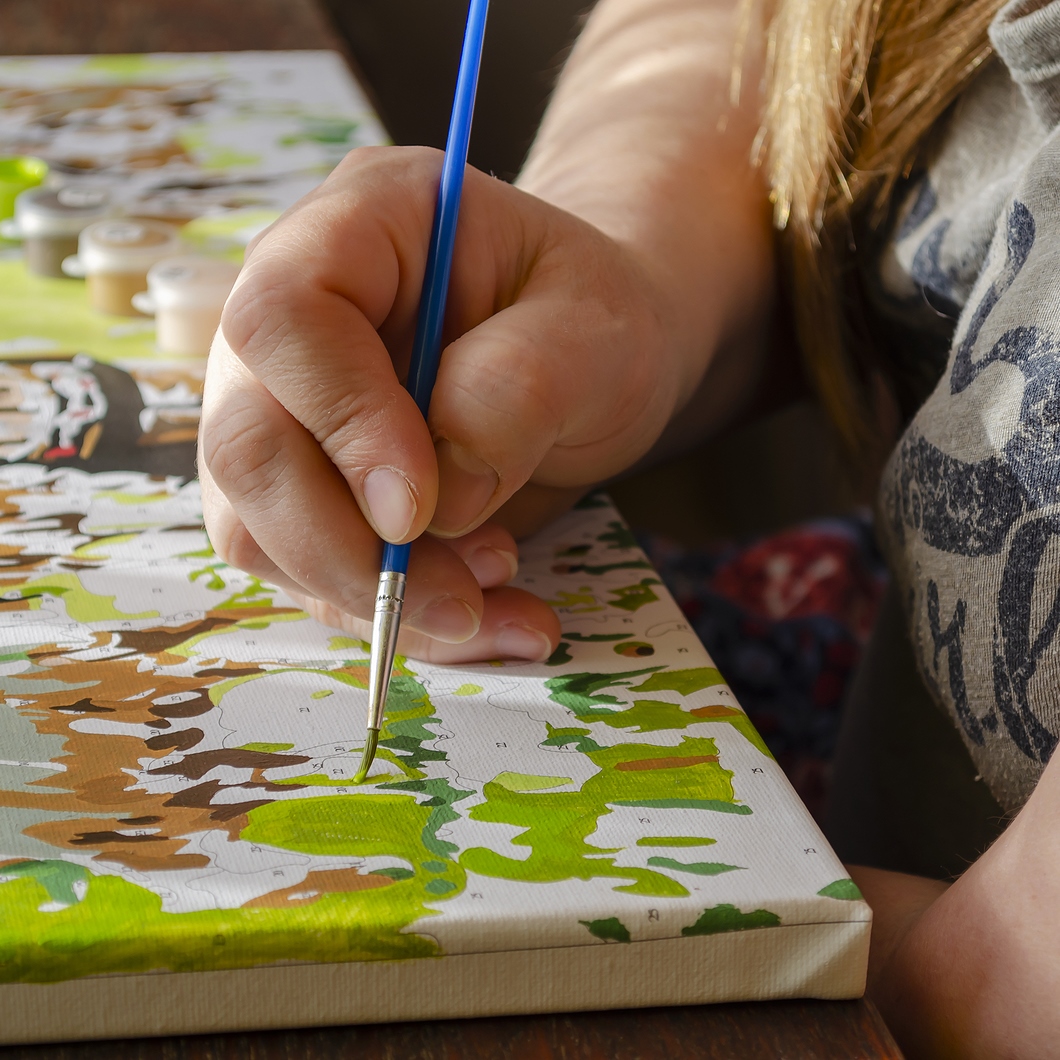Interactive art has gained momentum because people want experiences they can touch and create with their own hands. DIY kits step into this space by making creativity simple and approachable. They give anyone the chance to pick up a brush, follow clear steps, and see something beautiful take shape. The process is rewarding because it offers both structure and freedom.
This growing trend has opened a door to fine art appreciation for audiences who might never have engaged with it before. By participating directly, they begin to understand the choices artists make. Each stroke becomes a lesson in composition, balance, and expression.
Why Interactive Art Resonates: Beyond Passive Viewing
Interactive art invites people to engage rather than observe. It shifts the experience from standing in front of a piece to becoming part of its creation. This active involvement deepens the connection, as participants explore textures, shapes, and colors in a personal way. Every choice feels meaningful because it is tied to the outcome.
Museums and galleries present beauty to be admired, but DIY kits encourage exploration. The act of mixing paint or layering materials teaches lessons that watching alone cannot provide. The process unlocks curiosity, and curiosity fuels greater appreciation.
This hands-on journey also creates emotional resonance. Creating something with one’s effort builds pride and attachment. Participants begin to understand why details matter in fine art. Through this, even a simple kit becomes a bridge to recognizing skill, patience, and creativity in professional works. The learning happens naturally, one step at a time.
DIY Kits Demystify Artistic Process
DIY kits simplify what can seem overwhelming in fine art. They break complex techniques into steps anyone can follow. Instead of starting with a blank canvas, creators have a structure that guides them through color selection, shading, and layering.
Many hobbyists begin by recreating personal memories through a custom paint by numbers of your favorite photo, enjoying both the familiarity of the image and the rhythm of painting. This practice shows how art can connect daily life with creativity. It also reveals how even guided methods introduce concepts like contrast, proportion, and composition.
By working through these projects, participants gain insight into how professional artists think and work. Each section completed highlights the role of technique in transforming raw materials into expressive art. The experience builds confidence, making fine art feel less distant and more approachable.
The DIY–Collector Continuum: From Kit to Canvas
Starting with DIY art kits often sparks a deeper interest in fine art. The act of creating builds confidence and curiosity. Once someone completes a project, they may look for new challenges, like experimenting with different techniques or exploring subjects outside the kit. This progression naturally encourages exploration beyond structured projects.
As skills grow, many turn their attention to galleries or exhibitions. Seeing professional works after personal practice creates a new lens of appreciation. They notice brushwork, shading, and details with greater awareness. The gallery experience transforms, shifting from passive observation to active recognition of technique and intent.
Some even begin collecting. A painting or sculpture once viewed as distant now feels more accessible because of its hands-on practice. Owning original works becomes less intimidating when one understands the process behind creation. A single kit can become the first step toward a meaningful relationship with fine art.
Practical Tips: Choosing the Right Interactive Kit
Choosing the right kit can shape how enjoyable and meaningful the creative process becomes. A well-designed kit supports learning, encourages exploration, and provides an authentic link to fine art practices. To make the most of the experience, consider these key points:
- Quality of Materials: Look for kits that include durable brushes, vibrant pigments, and sturdy canvases. High-quality tools make painting smoother and the results more satisfying.
- Level of Difficulty: Beginners benefit from simple designs and step-by-step guides. Those with more experience may enjoy detailed kits that challenge their skills.
- Instruction Style: Clear directions and visual references help learners progress without confusion. The right balance of guidance and freedom makes the process enjoyable.
- Subject Relevance: Select themes that inspire you. Landscapes, portraits, or famous works often foster stronger connections to fine art traditions.
- Display Potential: Projects worth framing or gifting add extra motivation. Seeing a finished piece in use reinforces appreciation for artistic effort.
Wrapping Up
DIY kits make creativity accessible, turning blank surfaces into meaningful works. They invite participation, offering structure for beginners and exploration for those with growing skills. The process itself is engaging, and each completed project strengthens appreciation for artistic effort.
This journey often expands beyond the kit. A person who once followed numbered sections may begin noticing the choices artists make in galleries or studios. Techniques that once seemed distant start to feel familiar.
Interactive kits remind us that fine art appreciation can begin anywhere. With each brushstroke, creativity takes root, opening a lifelong path toward deeper connection with art.
